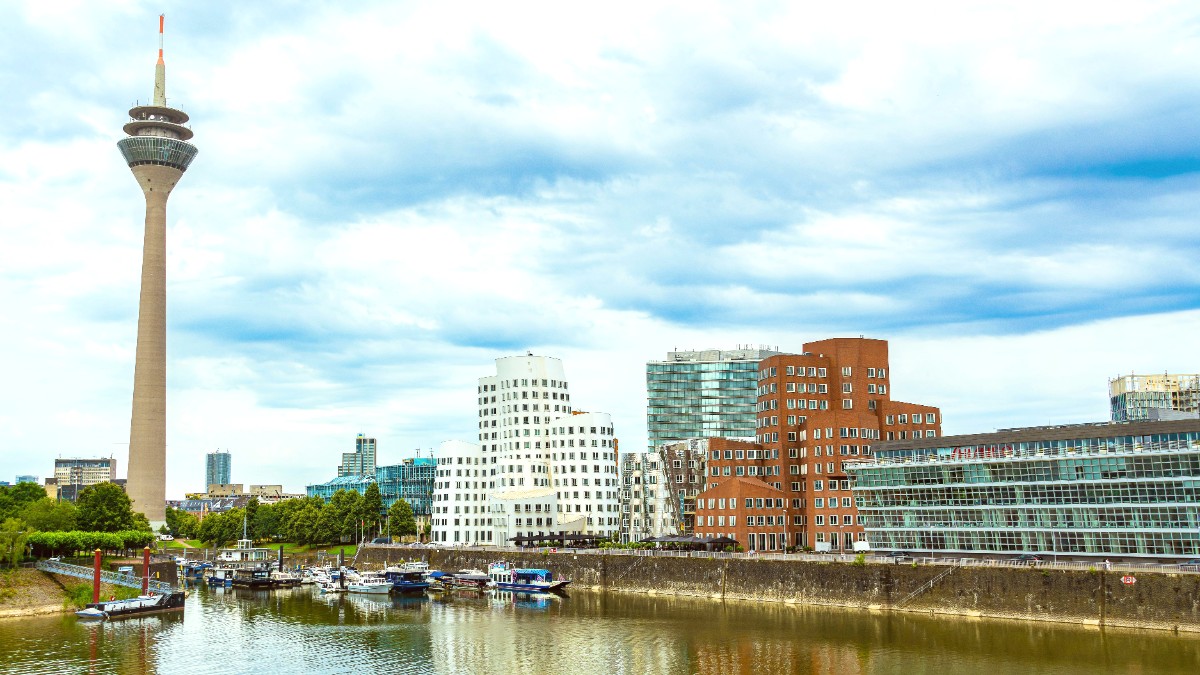
North Rhine Westphalia, Germany
Witness the innovative architecture of the MedienHafen, a transformed industrial port now demonstrating modern design. Discover a German city that blends its heritage with a contemporary outlook.
The Altstadt (Old Town), Königsallee (luxury shopping street), MedienHafen (modern architecture), and Rheinturm (Rhine Tower).
Enjoy Altbier, an unique dark, top-fermented beer brewed only in Düsseldorf.
Düsseldorf sits in western Germany, serving as the capital city of North Rhine-Westphalia, Germany's most populous state. The city lies on the banks of the Rhine River, a prominent waterway shaping the region's history and commerce.
Its location within the greater Rhine-Ruhr metropolitan area places it near other major German cities like Cologne, Essen, and Dortmund, making it a good base for wider regional exploration. Proximity to the Netherlands and Belgium means easy cross-border day trips.
First mention in 1135.
Followed the Battle of Worringen.
Capital of Duchy of Jülich-Cleves-Berg.
Became part of Rhine Province.
Transformed into modern economic hub.
Düsseldorf’s history goes back to the 7th or 8th century, with its first written mention in 1135. It gained city status in 1288, following the Battle of Worringen. For centuries, the city grew, becoming the capital of the Duchy of Jülich-Cleves-Berg in the 16th century. This period brought architectural and cultural expansion, establishing Düsseldorf as a regional power. The Napoleonic Wars and the subsequent Congress of Vienna saw the city become part of the Prussian Rhine Province in 1815. The 19th century brought industrialization, and Düsseldorf became a center for the steel and chemical industries.
World War II caused extensive destruction, with much of the city center, including the Altstadt, heavily damaged. However, Düsseldorf rebuilt itself with remarkable speed and vision, transforming into a modern economic powerhouse. The post-war reconstruction focused on blending the preservation of historic elements with new, forward-thinking urban planning.
This period also saw the city strengthen its position as a major financial, fashion, and advertising hub. The presence of a large Japanese community, dating back to the 1950s, creates a distinct multicultural layer to Düsseldorf’s identity, making it a truly international city with a rich and varied past.
Düsseldorf combines its past with a forward-looking spirit.
Düsseldorf offers a distinct urban experience, combining modern flair with historic charm. Here are some quick facts for a brief city overview:
Temperate oceanic, with mild summers and cool winters.
A significant hub for finance, advertising, fashion, and telecommunications.
Altbier, an unique dark, top-fermented beer brewed only in Düsseldorf.
Düsseldorf has a highly efficient public transport system (U-Bahn, trams, buses, S-Bahn).